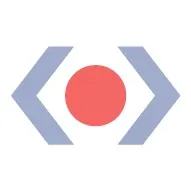According to Women in the Workplace, a 2018 study of women across the workforce, slightly less than half of women begin their tech careers in entry-level jobs.
But by the time they get to the C-Suite level, everything changes. Women comprise only 22% of executives.
In the tech world, inequality gets a running start. Only 20–25% of entry-level technical jobs are filled by women.
That early disparity widens as you climb each rung of the career ladder. According to an article in SHRM, 70% of tech companies have no female board members, and 54% have no female executives. Here’s what that looks like in Silicon Valley:
So, what’s the problem? Are women simply uninterested in tech?
That’s what many think, but it’s not so. Hundreds of women graduate from coding boot camps each year. But they often find that it’s hard to get that first foot in the door.
We ran a brief survey on Twitter on the reasons why women are having trouble getting hired.
The most common reasons were:
“You don’t have any real-world experience.”
“We don’t have time to do the hands-on training you’ll need.”
“We don’t hire juniors.”
Without that first job to get them on their feet, women can’t be leaders in the future. Frustrated and disillusioned, many women turn away from the industry altogether.
The conversations around diversity in tech can be difficult, and we are all responsible for doing something to help the problem and fix this issue.
Not only is achieving diversity in the workplace the right thing to do, but it also affects your company’s profits and productivity. Delivering through Diversity, a 2018 study by McKinsey and Company, made a solid business case for having more women on your team: “Companies in the top-quartile for gender diversity on executive teams were 21% more likely to outperform on profitability and 27% more likely to have superior value creation.”
And on the flip side? A lack of diversity can actually hurt your firm’s profits. McKinsey and Company found that “companies in the bottom quartile for both gender and ethnic/ cultural diversity were 29% less likely to achieve above-average profitability.”
The data doesn’t lie: A lack of gender diversity can negatively affect your profitability.
How and Why We Do Diversity
At This Dot, we try to do things differently. We’re a woman-owned company, so hiring and promoting women is in our DNA. With a team comprised of ~50% female employees, we’ve seen firsthand what a diverse team can do for our own company — and our bottom line.
But why? Part of the reason that diversity adds value is through additional perspectives. These diverse perspectives make for diversity of thought, which in turn leads to creative-problem solving, novel approaches, and greater efficiency.
Diversity also helps with recruiting and talent retention. In an interview, it’s important for candidates to see themselves reflected within your existing ranks. That indicates to potential employees that you don’t just “talk the talk” when it comes to diversity and inclusion: You also “walk the walk” in your hiring practices. In turn, an inclusive work environment will retain employees because they’ll feel respected at work and more invested in their jobs.
We also know that diversity and inclusion practices are not that simple.
A Proposed Solution
In order for more women to become senior developers and executives, more women have to get those foot-in-the-door, entry-level jobs first.
But, hiring junior developers often requires some extra workload on the company’s part. These are the concerns we often hear from hiring managers:
-
We don’t have the staffing to mentor now.
-
My team’s problems and work are complicated. How will a junior developer be able to comprehend and solve these complex technical issues?
-
A junior developer doesn’t have the skills to dive into our code. How can they be helpful?
-
A junior developer doesn’t have the real-world experience to deal with the issues that we face on a daily basis.
-
A junior developer will only slow down the team and won’t add any value.
We’ve created a “Hire the Fempire” program at This Dot to enable companies to hire women. The program addresses these valid concerns by allowing companies to hire entry level women without sacrificing business objectives.
When you hire our junior women developers (we call them apprentices), you’re hiring 40 hours a week from an apprentice and a dedicated 20 hours a week from a senior developer to work on your application.
Apprentices are trained on the job and on your tech stack with the guidance of This Dot architects. When they acquire the necessary skills, you can convert them to full-time hires.
Our program works to change the ratio in your company right now. You don’t need to wait for an imaginary time in the future when a solution might come to help you solve this problem.
If you care about diversity, we’d love to entertain a conversation. Contact us to learn how you can jumpstart your team’s diversity and work with our talented group of apprentices and developers! Our email is always open: hirethefempire@thisdot.co.
